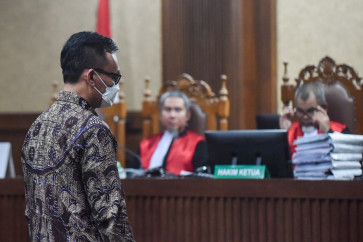Popular Reads
Top Results
Can't find what you're looking for?
View all search resultsPopular Reads
Top Results
Can't find what you're looking for?
View all search resultsThe grief thief: From comforting others to robbing them of their loss
To put it broadly, grief theft is when people feel overly sad about something that doesn’t really affect them to a point that they feel they are the victims themselves.
Change text size
Gift Premium Articles
to Anyone
W
hen my mother passed away, a distant relative took the spotlight in our grieving period, behaving as if she was the one who was suffering the most. She shared personal anecdotes of how she cherished their relationship and how heartbroken she was. I was resentful and hurt knowing that there was little bond between the two of them and because what she did felt like it took away from what was mine to hold on to.
And just recently when my brother-in-law passed away, my other sister, who years ago also had lost her husband, gave my grieving sister unsolicited advice and, in her attempt to be helpful, somehow made the crisis about her own loss.
I did not know there was an actual term to describe this faux pas until I learned through social media that the personal loss of West Java Governor Ridwan Kamil was being dragged out into a disgraceful feast by the “grief thieves”. Ridwan’s eldest son Emmeril “Eril” Khan Mumtadz was found dead after being swept away by strong currents while swimming in the Aare River in Bern, Switzerland, on May 26.
The term “grief thief” is drawn from The Ring Theory developed by psychologist Susan Silk and author Barry Goldman. This psychological concept is used in times of crisis to make figuring out what to say and what not to say to the grieving persons a bit easier.
The basic principle of this theory works like this. First, we draw a circle and put the name of the person in crisis in the middle of it. Then we draw a ring around that and label it with the people closest to them such as their spouses, parents and children. Then we draw another ring for their closest friends or other family members they are close to. Another ring can be drawn for their close coworkers, not-quite-as-close friends, distant relatives, etc., followed by a ring for other people who know them – acquaintances, community members and such.
The Ring Theory also comes with a “comfort in – dump out” motto guiding in which direction we should express our emotion.
It suggests that the people in the center circle can channel their sorrows any way they want – anger, frustration, sadness, etc. – to anyone because the crisis is theirs and they have the right to express their feelings to whoever they want. But the people in the rings around them can only direct their feelings toward people in the larger rings but not in the smaller rings.



















